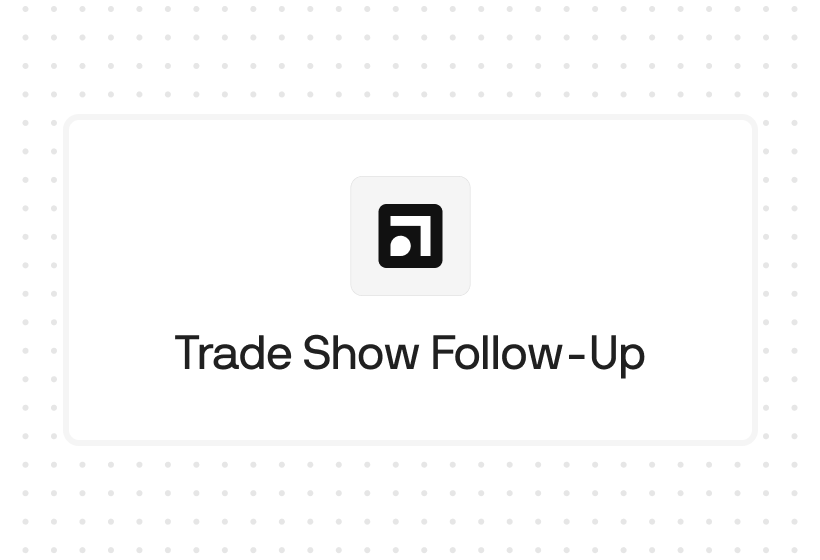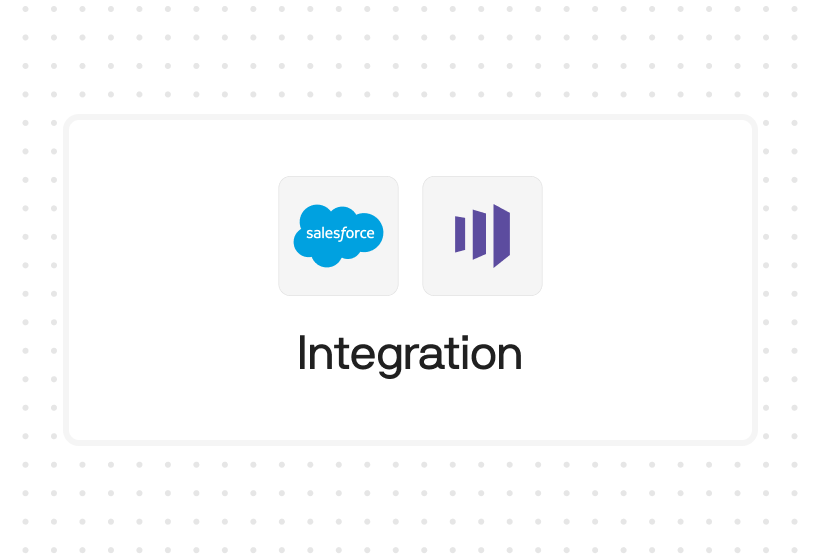Try Default

See how revenue teams automate revenue operations with Default.

Key Takeaways
Key takeaways
- B2B intent data surfaces real buyer activity — helping GTM teams engage accounts that are actually in-market, not just inbound.
- First-party, third-party, and hybrid intent data each offer different signal strengths — and play distinct roles across the funnel.
- Embedding intent into routing, scoring, and messaging leads to faster speed-to-lead, higher engagement, and stronger pipeline conversion.
- Impact comes from execution: real-time workflows, CRM alignment, and GTM-wide integration turn raw signals into revenue.
The form came in five hours ago. It looked like a good-fit account. But by the time it reached the right rep, the prospect had already booked a meeting — with your competitor.
Sound familiar?
This is what happens when your GTM motion runs without intent data.
You can’t see who’s truly in-market. You can’t score or route fast enough. And your best-fit leads get lost in a sea of noise, delays, and misaligned handoffs.
RevOps leaders don’t just need more leads — they need signal.
Intent data gives you that signal. It shows which accounts are researching your category, your competitors, or your product — so you can act fast, score smart, and route leads while they’re still hot.
In this guide, you’ll learn:
- What B2B intent data really is — and how it fits into your funnel
- The types of signals that matter (and which ones to ignore)
- How to operationalize intent across your GTM stack to boost conversion and reduce waste
Lets get into it…
Understanding B2B intent data in the modern sales landscape
In high-velocity B2B funnels, timing isn’t just important — it’s the difference between pipeline created and pipeline lost. Intent data gives you that timing advantage.
At its core, B2B intent data tracks real buyer behavior — the searches, clicks, and content consumption that signal when an account is actively evaluating solutions in your category. It’s how GTM teams shift from guessing who’s ready to buy… to knowing.
No surprise, then, that 68% of B2B marketers are ramping up their investment — using intent data to drive faster sales and more pipeline.
Where intent signals come from (and what they reveal)
To build a high-performing GTM engine, you need to understand where the signals come from — and what they really tell you. Here’s how the main sources break down:
First-Party Intent Data
What it is:
Behavior collected directly from your owned properties — like your website, product, emails, or support interactions.
What it tells you:
You’re on their radar. These signals usually show mid- to late-stage interest, especially when tied to key pages or repeat behaviors.
Examples:
- A lead views your pricing page multiple times
- A user triggers a product milestone (e.g. team invite, feature activation)
- Someone opens three nurture emails in a week, then clicks “Get a demo”
How GTM teams use it:
- Prioritize inbound with behavioral scoring
- Trigger retargeting and re-engagement flows
- Accelerate routing to reps based on activity depth
Third-Party Intent Data
What it is:
Behavior captured outside your ecosystem — from publisher networks, review sites, content syndication, and ad platforms.
What it tells you:
They’re actively researching your category — possibly even your competitors. It’s a strong top- or mid-funnel indicator that the account is in-market.
Examples:
- A buying team consumes multiple articles about “enterprise PLG tools” across tech publishers
- A prospect compares vendors on G2 or Capterra
- A lead downloads a whitepaper about “data security compliance” on a third-party site
How GTM teams use it:
- Identify net-new accounts showing buying signals
- Power ABM campaigns for early-stage engagement
- Add signal-based enrichment to outbound and paid targeting
Hybrid Intent Data
What it is:
A combined view of first- and third-party data, stitched together to provide a fuller picture of behavior across the funnel.
What it tells you:
The account is both researching broadly and engaging with you directly. This is your highest-confidence signal — and often a sign of late-stage activity.
Examples:
- A lead opens your product email, clicks into a feature page, and is also flagged in Bombora surge data
- An account clicks a LinkedIn ad, visits your case studies, and reads a comparison article off-site
How GTM teams use it:
- Build multi-touch scoring models that reflect real buying journeys
- Trigger outreach sequences tailored to behavior patterns
- Sync full-funnel signals across RevOps, marketing, and sales workflows
Types of intent Data that drive results
Intent data isn’t about vanity clicks. It’s about reading real buyer behavior — and knowing which signals match which stage of the journey.
Here are the signal types that matter most when building a GTM motion that converts:
Search intent
What it is:
Tracks the keywords and topics a prospect is actively researching.
What it tells you:
They’re problem-aware and exploring solutions. Often top-of-funnel but high value for early targeting.
Example:
A buyer searches “best PLG onboarding tools” or “alternatives to [competitor]” on analyst sites.
Engagement intent
What it is:
Measures how prospects interact with your owned content — emails, webinars, case studies, etc.
What it tells you:
They’re interested in your solution specifically — mid-funnel behavior with potential for fast follow-up.
Example:
A lead opens three nurture emails, watches a product demo, and downloads your security whitepaper.
Competitive intent
What it is:
Tracks behavior that signals active evaluation of you and your competitors.
What it tells you:
They’re in decision mode. Often the highest-priority signal for outbound, pricing, or exec follow-up.
Example:
An account visits G2 comparison pages or reads “X vs Y” breakdowns.
Data Flow: From search to close
Search intent → Engagement intent → Competitive intent → Demo request / Sales conversion
Why intent data changes the game for RevOps and GTM teams
Used strategically, intent data doesn’t just improve outreach — it transforms how revenue teams prioritize, convert, and scale.
1. Faster pipeline velocity
OpenPhone's experience is a strong example of what happens when intent signals are integrated into the flow of inbound motion.
Before Default, leads sat in queues for days, with routing delays slowing time-to-demo to an average of 2.5 days. After layering in third-party intent and automating their workflows, OpenPhone cut speed-to-lead by 67%, getting qualified prospects to the right rep in just hours. That improvement alone drove a 17% lift in inbound conversion rates. Misrouted leads — a constant drag on sales ops — dropped by 5x.
These are the compounding effects of acting on signals instead of letting pipeline stall due to operational friction.
2. Higher engagement, less wasted outreach
Intent data powers messaging that actually gets noticed — because it’s aligned with what buyers are researching in real time. Instead of generic follow-ups, reps can reach out with precision: referencing product comparisons, relevant features, or timely pain points that match recent behavior.
The result is outreach that feels like help, not spam — and it works. According to Gartner, customers are three times more likely to purchase larger deals with less regret when suppliers provide helpful information that advances their decision-making.
3. Smarter prioritization across sales
Intent scoring gives reps a clear view of which accounts are active, not just “qualified” on paper. Traditional lead scoring often relies on static traits like company size or job title — useful, but blind to behavior. Intent data flips that model. It surfaces accounts that are spiking in activity, researching specific use cases, or engaging with competitors.
For GTM teams, this means fewer wasted touches and more focus on accounts that are actually in-market. Prioritization becomes dynamic, not reactive.
4. Lower CAC, higher ROI
Perhaps the most overlooked impact of intent data is its effect on the bottom line.
When GTM teams focus their energy and budget on buyers already signaling interest, efficiency improves across the board. Marketing sees higher conversion rates from fewer impressions. Sales spends less time on dead leads.
And CAC drops while revenue per lead increases — not by doing more, but by doing less with more focus. Intent doesn’t just improve performance — it improves the math behind growth.
How to operationalize intent data across your GTM motion
Collecting signals is easy. Turning them into pipeline is where the work (and payoff) happens. Here’s how top-performing teams use intent data to move faster, prioritize smarter, and convert more.
1. Align signals to funnel stages — and act accordingly
Every signal doesn’t mean “book a meeting.” Keyword research? That’s top-of-funnel awareness — good for nurture or light outbound. G2 comparisons or pricing page visits? That’s late-stage behavior. Build your workflows around signal strength and buying stage, not just lead score.
2. Score smarter, not harder
Stop relying on static firmographic scores. Feed intent signals into your enrichment engine. Tools like Default automatically assess activity patterns, surfacing accounts with real buying momentum. Sales sees the right leads, in the right order, at the right time.
3. Trigger routing in real time — not hours later
A five-minute delay can cost you a meeting. Default customers route high-intent accounts to reps instantly — triggering meeting links, Slack alerts, and CRM updates the moment a form is submitted. Speed-to-lead becomes speed-to-revenue.
4. Match message to behavior
Intent tells you what buyers care about. Use it. If a prospect is consuming content about data security, lead with compliance pain points, not generic product features. Personalization isn’t about tokens; it’s about timing and relevance.
5. Connect your GTM stack — or risk signal decay
Intent is only as powerful as the system it flows through. Integrate with your CRM, MAP, and sales engagement tools so that data flows without friction, and every team is operating from a single, real-time source of truth.
Real-World applications of B2B intent data
Intent data only drives results when it’s embedded directly into the systems and workflows that move pipeline forward. Here are five proven ways top GTM teams are turning signal into speed, precision, and growth — with real examples of what changes when it’s done right.
1. Converting inbound leads before competitors can
When buyers show intent, speed matters.
Runway built an automated pipeline that routes and schedules inbound leads the moment they submit a form — no waiting, no follow-ups. By enriching leads with Clearbit, checking rep ownership in HubSpot, and firing off instant Slack alerts and calendar links, they cut delays and maximized conversion windows.
Within six months, Runway saw a 400% increase in lead volume and a 10% lift in inbound conversions — all while scaling GTM workflows 10x more efficiently.
2. Routing product signups with sales-ready precision
In product-led growth motions, intent data isn't just helpful — it’s essential.
Rootly used Default to route free trial signups based on firmographics and behavior, dynamically assigning them to sales or letting marketing nurture them further. That allowed them to boost product-led pipeline by 15% and increase inbound conversion rates by 23% — all while eliminating the overhead of chasing leads across disconnected CRMs and tools.
3. Replacing manual ops with intent-driven automation
Manual qualification, triage, and routing are not scalable — and they kill speed-to-lead.
Rogo used to process inbound leads manually every evening, missing high-intent prospects in the process. After adopting Default, they automated scheduling, enrichment, and rep assignment using real-time behavior signals.
The result: 2x more inbound demos booked, 100% of manual routing eliminated, and a sales team that scaled from 0 to 4 reps without operational bottlenecks.
4. Recovering lost leads with intelligent follow-up
Not every high-intent prospect books a meeting on the first touch — and many fall through the cracks without a system to catch them. Companies like Rootly use fallback workflows to detect when a prospect doesn’t book a meeting and trigger immediate, personalized follow-ups.
This helped them recover and convert otherwise lost leads, fueling a stronger handoff between marketing and sales.
5. Driving full-funnel GTM alignment
When intent signals are integrated across the stack — from CRM to outreach tools to rep alerts — the entire revenue team operates with sharper focus. Instead of working off assumptions or lead score guesswork, GTM teams align around real buyer behavior.
In companies like Runway and Rootly, this alignment translated into faster handoffs, fewer misrouted leads, more accurate territory assignment, and cleaner CRM data — all of which compounded into more efficient growth.
Overcoming challenges in using B2B intent data
Intent data can be a revenue multiplier — but only if it’s implemented with precision. Here are four common pitfalls GTM teams face, and how to avoid them.
1. Mistaking noise for signal
Intent data is only as good as its source. Many vendors promise real-time insight, but deliver outdated or loosely matched signals. The result? Reps waste time chasing dead accounts and burn trust with premature outreach.
What to do instead: Prioritize providers with transparent sourcing, strict recency filters, and verified match rates. If you can't explain where the signal came from, you shouldn't act on it.
2. Drowning in signals with no scoring model
More data isn’t better — it’s just more noise unless you know how to score and act on it. Without clear rules, teams default to treating every signal the same, flooding reps with leads that look active but aren’t actually qualified.
Fix it fast: Align signal strength to funnel stage. For example, early-stage research should trigger light outbound or nurture, not a rep touch. Save your AEs for mid- and late-stage signals that show buying intent, not curiosity.
3. Integrating intent but not operationalizing it
Many teams plug intent into their CRM or MAP and think the job is done. But if the data just sits there — unscored, unrouted, unalerted — it's functionally useless.
What actually works: Build workflows where intent signals trigger real-time action: routing, scoring, meeting links, Slack alerts. Intent needs to flow, not sit.
4. Leaving your team in the dark
Even high-quality signals are wasted if your team doesn’t know how to use them. If reps don’t understand what a surge score or engagement spike actually means, they’ll ignore it — or worse, misuse it.
Solution: Make intent literacy part of your enablement playbook. Train reps not just to recognize signals, but to respond with the right sequence, timing, and messaging.
Best practices for maximizing intent data impact
The teams seeing real ROI from intent data aren’t just activating it — they’re building coordinated GTM systems around it. Here’s what sets them apart from teams that treat intent like just another data point.
1. Align signals with your ICP’s real buying journey
Intent data is only valuable if it maps to how your best customers actually buy. If your ICP typically hits your integrations page late in their journey, don’t treat that signal like an early-stage touch. Misalignment leads to missed timing and wasted outreach.
What to do: Audit your highest-converting deals and reverse-engineer the signal path. Use that as your baseline for prioritization, not generic industry playbooks.
2. Define signal thresholds clearly
A single page view isn’t enough. And three unrelated content clicks might not mean much either. Without minimum thresholds, you’ll swamp reps with noise disguised as activity.
What works: Define clear rules — e.g., “3 high-intent actions in 7 days” — and build workflows that trigger only when those criteria are met. Good intent strategy starts with saying no to weak signals.
3. Make intent everyone’s problem (and everyone’s weapon)
If marketing sees intent but sales ignores it, or RevOps can’t route it, you’re leaving money on the table. Intent data needs to be embedded across the GTM stack — not siloed in a dashboard.
What that looks like: Real-time alerts in Slack. Auto-routing in Salesforce. Triggered nurtures from marketing. Unified lead views tied to scoring logic that everyone understands and trusts.
4. Use intent to trigger multi-touch plays
Intent should be the spark, not the message. When a target account spikes on competitor searches, don’t just send one email — trigger a full-funnel response: outbound touch, tailored ad sequence, and executive alignment play.
Pro tip: Use signal type to guide channel. Competitive spike? Sales touch. Category search? Marketing nurture. Demo page revisit? Calendar drop + Slack alert.
5. Treat your scoring model like a product — and iterate
Intent data doesn’t stay static, and neither should your playbooks. Buyer behavior evolves. Channels shift. Competitors change tactics.
Best-in-class teams review signal performance quarterly. They prune dead triggers, recalibrate scoring thresholds, and refine what counts as “sales-ready.” The goal isn’t more data — it’s sharper signal-to-action velocity.
Optimize your B2B intent data strategy with Default
Intent data only delivers ROI when it’s built into your GTM motion — in real time, across systems, and without endless handoffs. That’s exactly what Default was built to do.
High-performing revenue teams use Default to:
- Instantly route high-intent leads to the right rep — with no CRM delays
- Enrich records with the behavioral signals that actually drive conversion
- Trigger workflows the moment buying intent appears — not hours later
- Turn signal into speed, precision, and revenue — without engineering support
If you're serious about making intent data actionable at scale, Default is your GTM operating layer.
Book a demo to see how Default transforms signal into pipeline.
sup
Conclusion

Former pro Olympic athlete turned growth marketer! Previously worked at Chili Piper and co-founded my own company before joining Default two years ago.
Accelerate your growth with Default.
Revamp inbound with easier routing, actionable intent, and faster scheduling















.png)








%201.svg)



.svg)





%201.svg)



%201.svg)

